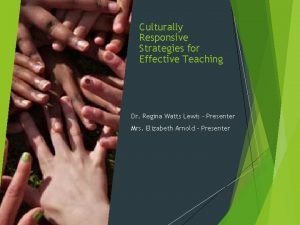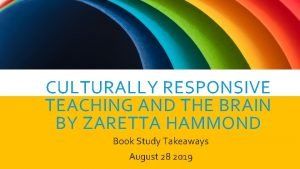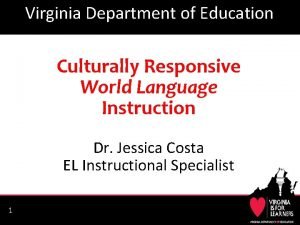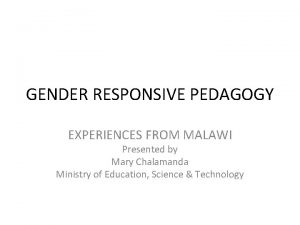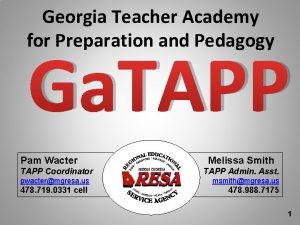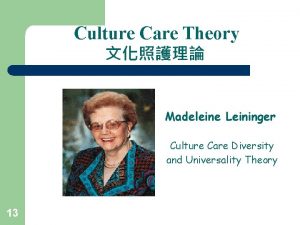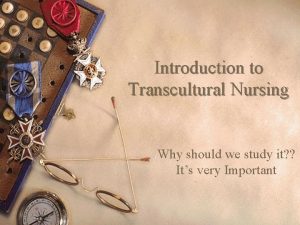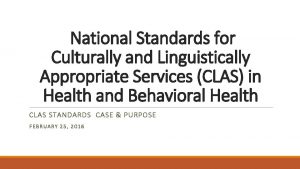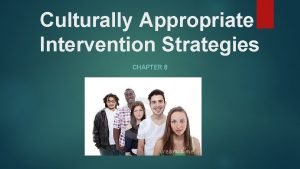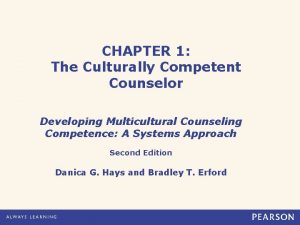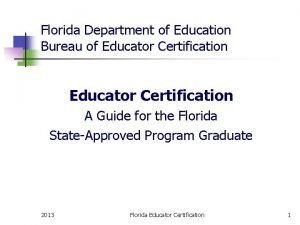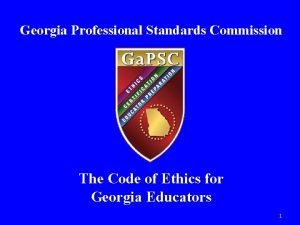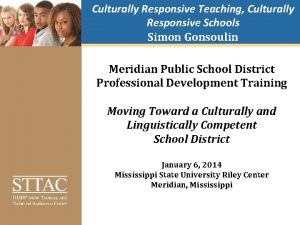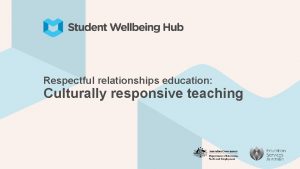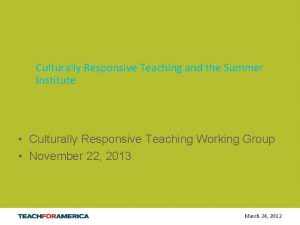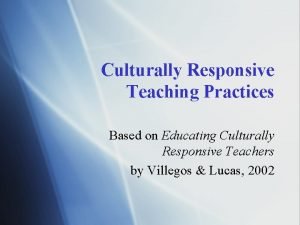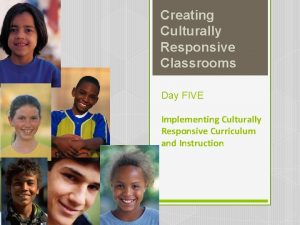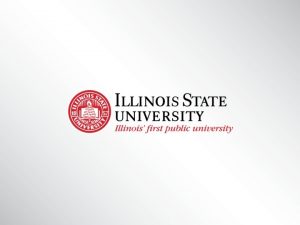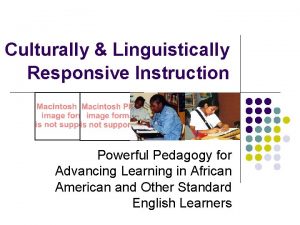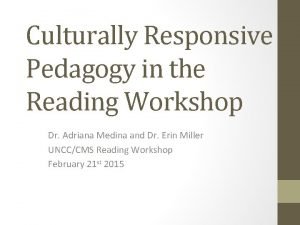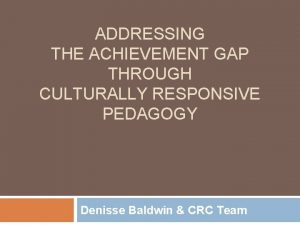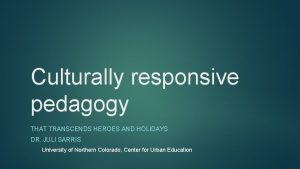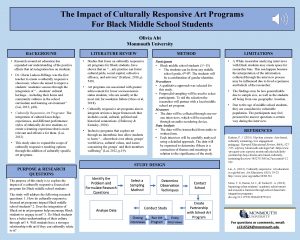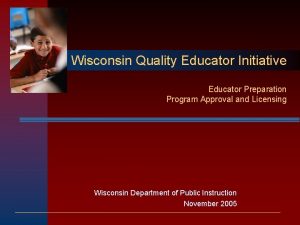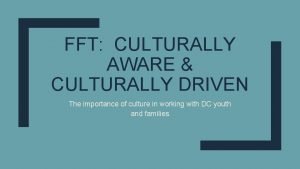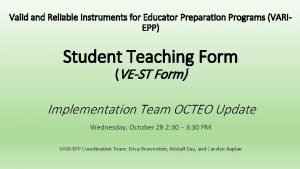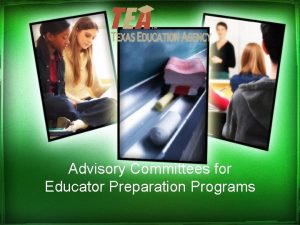Culturally Responsive Pedagogy in Educator Preparation Programs Dia
























- Slides: 24

Culturally Responsive Pedagogy in Educator Preparation Programs Dia Jackson, Ed. D. , American Institutes for Research Suzanne Robinson, Ph. D. , The University of Kansas Collaboration for Effective Educator Development, Accountability and Reform (CEEDAR) H 325 A 120003

Disclaimer This content was produced under U. S. Department of Education, Office of Special Education Programs, Award No. H 325 A 120003. Bonnie Jones and David Guardino serve as the project officers. The views expressed herein do not necessarily represent the positions or polices of the U. S. Department of Education. No official endorsement by the U. S. Department of Education of any product, commodity, service, or enterprise mentioned in this website is intended or should be inferred.

Objectives In today’s session, participants will: 1. Share accomplishments from institutions of higher education (IHEs) who are successfully integrating Culturally Responsive Teaching (CRT) into their educator preparation programs. 2. Reflect on CRT principles and how they can be integrated into educator preparation coursework.

Guest Speakers ² Michael Orosco, Ph. D. , author of CEEDAR’s knowledge paper and innovation configuration on Culturally Responsive Teaching ² Angela López-Velásquez, Ph. D. , Southern Connecticut State University ² Donald Easton-Brooks, Ph. D. , professor and Dean of the University of South Dakota School of Education

State Policy and Practice Portrait Culturally and Linguistically Diverse (CLD) Students: What Educator Preparation Programs Need to Do to Support Teacher Learning ²The Priority ²State Practice Highlights ²Leveraging the Every Student Succeeds Act (ESSA)

The Priority ² Growing “minority” population: 55% by 2025 (U. S. Department of Education, 2015) ² National Assessment of Educational Progress (NAEP) reading and mathematics scores in 2015 ² Overrepresentation in special education ² High suspension and expulsion rates How are our teachers prepared to address these inequities? Artiles, Trent & Palmer, 2004; Donovan & Cross, 2002; Dunn, 1968, Klinger et al. , 2005; U. S. Department of Education, 2015; U. S. Department of Education, 2016

Michael Orosco, Ph. D. ² CRT benefits – – Targets historically disadvantaged Benefits exist despite systemic inequalities

Concerns ² Inadequate teacher preparation ² Cultural learning gap between teachers and students ² Evidence-based practices are not synonymous with CRT.

Defining CRT ² CRT values students’ cultural and linguistic resources, and views these as assets to build upon rather than deficits to be overcome through schooling. ² CRT measures student development in multiple ways, in addition to standardized test scores. ² CRT highlights the importance of strong and warm working relationships among school participants and serves as cultural organizer, mediator, and orchestrator of social contexts. ² CRT helps students and families bridge borders between home and school cultures.

What is an evidence-based practice? ² Evidence-based practice (EBP) is the conscientious and judicious use of current best evidence in conjunction with professional expertise and students’ values to guide educational decisions. ² Best evidence includes empirical evidence from randomized controlled trials and evidence from other scientific methods such as descriptive and qualitative research. ² When enough research evidence is available, the practice should be guided by research evidence in conjunction with professional expertise and student values. ² As more research is done in a specific area, the research evidence must be incorporated into the EBP. Adapted from Sackett, D. , Rosenberg, W. , Muir Gray, J. , Haynes, R. , & Richardson, W. (1996). Evidence based medicine: What it is and what it isn't. British Medical Journal, 312, 71– 72. Retrieved from https: //www. cebma. org/wp-content/uploads/Sackett-Evidence-Based. Medicine. pdf

CRT EBP CRT Themes Emerging EBP w/CRT EBP Instructional Engagement Collaborative Teaching Problem-Solving Approach Cultural, Language, and Racial Identity Responsive Feedback Child-Centered Instruction Multicultural Awareness Modeling Assessment High Expectations Instructional Scaffolding Materials Critical Thinking Social Justice

IHE HIGHLIGHTS: SOUTHERN CONNECTICUT STATE UNIVERSITY AND UNIVERSITY OF SOUTH DAKOTA

Southern Connecticut State University ANGELA LÓPEZVELÁSQUEZ, PH. D.

CRT in Teacher Preparation Programs Context: ² Mandatory teacher certification course on supporting English learners (ELs) in the regular education classroom. ² Only 1. 5 credits: 18 instructional hours. ² All certification candidates take this course.

Existing CRT Aspects in IDS 471 Before CEEDAR ² Role of native language in English academic development. ² Introduction to ELs’ funds of knowledge (González, Moll, & Amanti, 2005). ² Cultural Relevance and Prior Knowledge taught as important principles in teaching ELs (Levine & Mc. Closkey, 2013). ² Provision of abundant comprehensible input (departing from ELs academic, linguistic, life knowledge) and scaffolding. ² Application of principles to a lesson plan designed to include ELs with different levels of English proficiency. ² High expectations Lesson must demonstrate opportunities provided to ELs to reach the same academic standards as non-ELs.

New CRT Aspects in IDS 471 After CEEDAR ² Heightened emphasis on: – Expanded definition of cultural relevance for students (might not be the same for two students). – ELs’ native language, life experiences, and personal interests as capital, not as a barrier to learning (Aceves & Orosco, 2014). – Funds of knowledge—deeper exploration and opportunities. – Social justice, political consciousness, and advocacy. ² Addition of Connecticut English Language Proficiency (CELP) Standards to lesson plan assignment.

Challenges ² Time! Short course: Limits time to dedicate to… – Exposing teacher candidates to more experiences with CRT. – Providing timely feedback on instructional design. – Increased field experience.

University of South Dakota School of Education DONALD EASTON-BROOKS, SUSAN GAPP, AND NICK SHUDAK

Summer Culturally Responsive Institute ² CRT Expert Keynote With General University Community and Special Guests ² Workshop With School of Education Faculty and Other Invited Faculty ² Workshop With School Partners

Additional Culturally Responsive Initiatives ² Professional Development Course for Teachers (taught by USD faculty) ² SOE Diversity Committee and Curriculum Reform

Center for Policy, Equity, and Outreach ² Partnership With Sioux Falls School Leaders ² Partnership With State and Priority Schools ² Diverse Educator Pathway Program

Resources ² CEEDAR IC on CRT ² CEEDAR Evidence Standards ² CEEDAR Policy and Practice Brief on Culturally Responsive Teaching

Discussion and Q&A ² Please share your experience! ² Questions? ² Comments?

References Aceves, T. C. , & Orosco, M. J. (2014). Culturally responsive teaching (Document No. IC-2). Gainesville, FL: University of Florida, The CEEDAR Center. Retrieved from http: //ceedar. education. ufl. edu/wp-content/uploads/2014/08/culturally-responsive. pdf Artiles, A. J. , Trent, S. C. , & Palmer, J. (2004). Culturally diverse students in special education: Legacies and prospects. In J. A. Banks & C. M. Banks (Eds. ), Handbook of research on multicultural education (2 nd ed. , pp. 716– 735). San Francisco, CA: Jossey Bass. Donovan, M. S. , & Cross, C. T. (2002). Minority students in special and gifted education. Washington, DC: National Academies Press. Dunn, L. M. (1968). Special education for the mildly retarded: Is much of it justifiable? Exceptional Children, 35(1), 5– 22. Klingner, J. K. , Artiles, A. J. , Kozleski, E. , Harry, B. , Zion, S. , Tate, W. , & Riley, D. (2005). Addressing the disproportionate representation of culturally and linguistically diverse students in special education through culturally responsive educational systems. Education Policy Analysis Archives, 13(38), 1– 43. Retrieved from http: //epaa. asu. edu/ojs/article/view/143 U. S. Department of Education. (2015, March 15). Achievement gap narrows as high school graduation rates for minority students improve faster than rest of nation [Press release]. Retrieved from http: //www. ed. gov/news/press-releases/achievement-gap-narrows-highschool-graduation-rates-minority-students-improve-faster-rest-nation U. S. Department of Education. (2016). Every Student Succeeds Act (ESSA). Retrieved from http: //www. ed. gov/ESSA
 Culturally responsive vs culturally relevant
Culturally responsive vs culturally relevant Culturally relevant pedagogy
Culturally relevant pedagogy Reach associates
Reach associates Culturally responsive teaching and the brain slides
Culturally responsive teaching and the brain slides Culturally responsive teaching in music education
Culturally responsive teaching in music education Classroom
Classroom Vdoe culturally responsive teaching
Vdoe culturally responsive teaching What is gender responsive pedagogy
What is gender responsive pedagogy Georgia teacher academy for preparation and pedagogy
Georgia teacher academy for preparation and pedagogy Disadvantages of waterfall model in software engineering
Disadvantages of waterfall model in software engineering Oh que dia glorioso esse dia há de ser
Oh que dia glorioso esse dia há de ser Recuerdas aquel dia pues desde ese dia
Recuerdas aquel dia pues desde ese dia Senhor neste dia que amanhece
Senhor neste dia que amanhece Working with culturally and linguistically diverse families
Working with culturally and linguistically diverse families Madeleine leininger culture care diversity and universality
Madeleine leininger culture care diversity and universality Culturally congruent care definition
Culturally congruent care definition National culturally and linguistically appropriate services
National culturally and linguistically appropriate services Culturally appropriate intervention strategies
Culturally appropriate intervention strategies Culturally competent counselor
Culturally competent counselor Cultural deprivation definition
Cultural deprivation definition Nurse educator resume
Nurse educator resume Bureau of education certification florida
Bureau of education certification florida Turing tumble educator guide
Turing tumble educator guide Aed t&l
Aed t&l Teachers violating the code of ethics in georgia
Teachers violating the code of ethics in georgia
